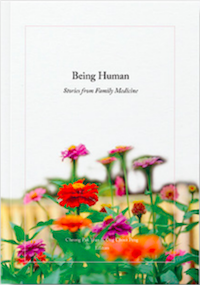The following two book reviews are accompanied by my personal call to medical students and doctors in training (DITs). Learning the art and science of medicine never stops, and the experience can be overwhelming. Yet, all of us are expected to maintain some sort of “clinical detachment” as we get thrown into the deep end of our learning. I’m not saying students and DITs need to be spoon-fed or have their hands held though. A balance needs to be achieved between “getting the job done”(ie, learning and being efficient) and “what this job is really about” (ie, the art of things). I sincerely hope to invite more medical students and DITs to write about their experiences, to say things that are uncomfortable and ask questions that no one dared to ask.
The Soul of a Doctor: Harvard Medical Students Face Life and Death
Do you remember your "firsts" as a medical student? The first time you clerk a patient can be the most nerve-racking thing you've ever done. Or perhaps that's a far second compared to taking bloods or inserting a urinary catheter for the first time. What about that bedside tutorial you had with five other students and that one scary professor staring at you? Or maybe your first case presentation (such an elusive art, it is) made to a surgeon who then tells you how terrible your summary was.
The transition from a medical student who possesses a lot of clinical knowledge to a doctor can be daunting. It is life-changing and, as the saying goes, a steep learning curve. All of the things required of medical students put your personal strengths and weaknesses on full display for patients, peers, seniors and nurses to see, until that transformation occurs within you and you become a confident – and hopefully competent – doctor.
This book features a group of medical students and their experiences as they moved through that transformative process. Some of these students could probably have a side career in writing, as they described the most unexpected incidents, weaving in their personal lives and cultural backgrounds into their testimonies.
Now that I am reminded of how much medical students have to say, it makes me wonder how much of what I experienced as a student has been suppressed, forgotten or just somehow incorporated into my identity as a doctor now. Looking back, there were things I'd witnessed, overheard or experienced that were not spoken about subsequently. Just take it in, and move on. Don't ask so many questions.
I hope that we can change things moving forward. It is a well-known fact that becoming doctors can make you jaded, angry and disillusioned. But I'm sure that for many of us, it was a gradual process rather than a sudden change. Let's listen to what our future colleagues have to say. After all, we were all once students ourselves.
.jpg)
Title: The Soul of a Doctor: Harvard Medical Students Face Life and Death
Editors: Susan Pories, Sachin H. Jain and Gordon Harper
Number of pages: 248
ISBN: 9781565125070
Type of book: Paperback
Publisher: Algonquin Books
Year of publication: 2006
Being Human: Stories from Family Medicine
I didn't really know what to expect when I received this book. When I skimmed the pages, I discovered colourful drawings and eye-catching images that illustrated various aspects of medicine which we often do not voice out – the human side of things. Like the faceless person behind a patient's medical problems, the unspoken stressors that the patient doesn't know how to voice, or the hapless medical student encountering difficult situations for the first time.
In fact, the artwork in Being Human were done entirely by medical students as part of A/Prof Cheong Pak Yean's creative method of incorporating their family medicine experience into a visual montage. I suppose it was probably therapeutic for the students, to be able to translate into images what words could not express about their patient encounters.
The interesting thing was what they did with the drawings later. The editors of this book showed the drawings to a group of doctors, mostly GPs, and tasked them to write about the images with a focus on the humanistic aspect of the patient's care. These doctors rose to the occasion and came up with heartfelt and poignant snippets about their experiences in healthcare, each interpreting the artwork for themselves, independent of what the original artists (the students) had thought.
Thus, this book gives an insight into what medical students see as they train to become doctors, as well as being a platform for the contributing doctors to express their creative juices. This aspect of the book is what's rather lacking in our day-to-day practice, amid the busy hubbub of ward rounds, clinics, medical reports and meetings. But it really shouldn't be ignored. Some of us process difficult experiences in words (such as a journal), or over a round of coffee (or alcohol) with friends. Some of us simply have a hard time expressing emotions and end up compartmentalising or suppressing what we've seen. Yet, as doctors, who are exposed to a range of challenging situations, it is important to have an outlet. Oftentimes, a picture speaks a thousand words. Some of my patients go through art therapy, or use art as a form of expression. I think doctors should be given a chance to do the same. It would probably benefit us more than we realise.

Title: Being Human: Stories from Family Medicine
Editors: A/Prof Cheong Pak Yean and Dr Ong Chooi Peng
Number of pages: 248
ISBN: 9789811414602
Type of book: Hardcover
Publisher: College of Family Physicians Singapore
Year of publication: 2018